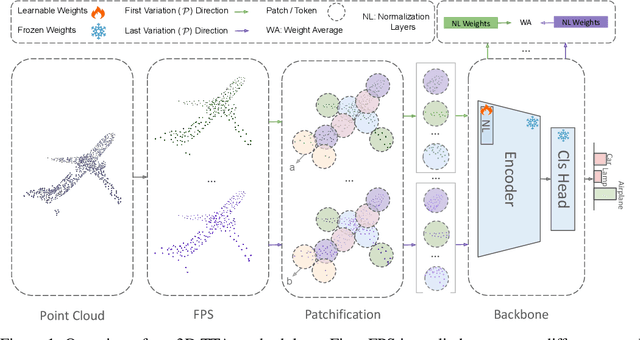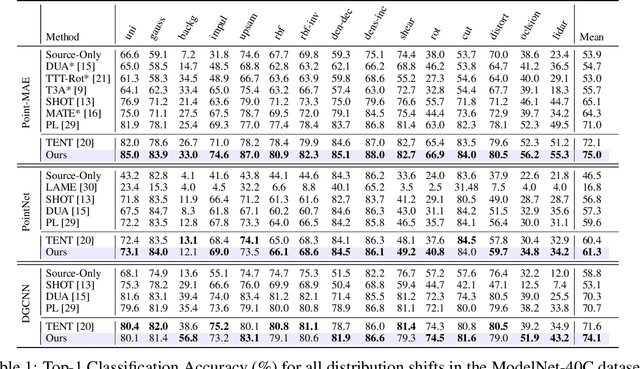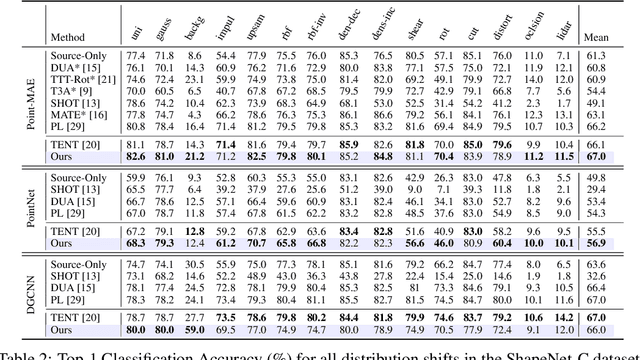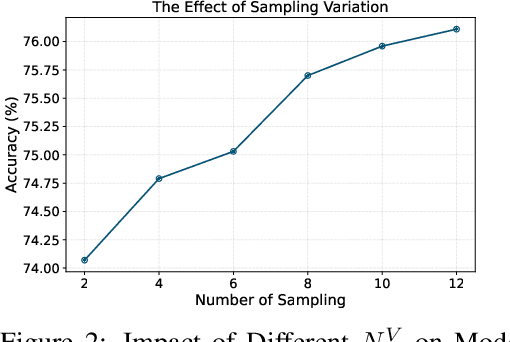Moslem Yazdanpanah
Spectral State Space Model for Rotation-Invariant~Visual~Representation~Learning
Mar 09, 2025Abstract:State Space Models (SSMs) have recently emerged as an alternative to Vision Transformers (ViTs) due to their unique ability of modeling global relationships with linear complexity. SSMs are specifically designed to capture spatially proximate relationships of image patches. However, they fail to identify relationships between conceptually related yet not adjacent patches. This limitation arises from the non-causal nature of image data, which lacks inherent directional relationships. Additionally, current vision-based SSMs are highly sensitive to transformations such as rotation. Their predefined scanning directions depend on the original image orientation, which can cause the model to produce inconsistent patch-processing sequences after rotation. To address these limitations, we introduce Spectral VMamba, a novel approach that effectively captures the global structure within an image by leveraging spectral information derived from the graph Laplacian of image patches. Through spectral decomposition, our approach encodes patch relationships independently of image orientation, achieving rotation invariance with the aid of our Rotational Feature Normalizer (RFN) module. Our experiments on classification tasks show that Spectral VMamba outperforms the leading SSM models in vision, such as VMamba, while maintaining invariance to rotations and a providing a similar runtime efficiency.
Spectral Informed Mamba for Robust Point Cloud Processing
Mar 06, 2025Abstract:State space models have shown significant promise in Natural Language Processing (NLP) and, more recently, computer vision. This paper introduces a new methodology leveraging Mamba and Masked Autoencoder networks for point cloud data in both supervised and self-supervised learning. We propose three key contributions to enhance Mamba's capability in processing complex point cloud structures. First, we exploit the spectrum of a graph Laplacian to capture patch connectivity, defining an isometry-invariant traversal order that is robust to viewpoints and better captures shape manifolds than traditional 3D grid-based traversals. Second, we adapt segmentation via a recursive patch partitioning strategy informed by Laplacian spectral components, allowing finer integration and segment analysis. Third, we address token placement in Masked Autoencoder for Mamba by restoring tokens to their original positions, which preserves essential order and improves learning. Extensive experiments demonstrate the improvements of our approach in classification, segmentation, and few-shot tasks over state-of-the-art baselines.
Test-Time Adaptation in Point Clouds: Leveraging Sampling Variation with Weight Averaging
Nov 02, 2024



Abstract:Test-Time Adaptation (TTA) addresses distribution shifts during testing by adapting a pretrained model without access to source data. In this work, we propose a novel TTA approach for 3D point cloud classification, combining sampling variation with weight averaging. Our method leverages Farthest Point Sampling (FPS) and K-Nearest Neighbors (KNN) to create multiple point cloud representations, adapting the model for each variation using the TENT algorithm. The final model parameters are obtained by averaging the adapted weights, leading to improved robustness against distribution shifts. Extensive experiments on ModelNet40-C, ShapeNet-C, and ScanObjectNN-C datasets, with different backbones (Point-MAE, PointNet, DGCNN), demonstrate that our approach consistently outperforms existing methods while maintaining minimal resource overhead. The proposed method effectively enhances model generalization and stability in challenging real-world conditions.
Feedback-guided Domain Synthesis with Multi-Source Conditional Diffusion Models for Domain Generalization
Jul 04, 2024Abstract:Standard deep learning architectures such as convolutional neural networks and vision transformers often fail to generalize to previously unseen domains due to the implicit assumption that both source and target data are drawn from independent and identically distributed (i.i.d.) populations. In response, Domain Generalization techniques aim to enhance model robustness by simulating novel data distributions during training, typically through various augmentation or stylization strategies. However, these methods frequently suffer from limited control over the diversity of generated images and lack assurance that these images span distinct distributions. To address these challenges, we propose FDS, a novel strategy that employs diffusion models to synthesize samples from new domains by training on source distribution samples and performing domain mixing. By incorporating images that pose classification challenges to models trained on original samples, alongside the original dataset, we ensure the generation of a training set that spans a broad distribution spectrum. Our comprehensive evaluations demonstrate that this methodology sets new benchmarks in domain generalization performance across a range of challenging datasets, effectively managing diverse types of domain shifts. The implementation is available at: \url{https://github.com/Mehrdad-Noori/FDS.git}.
WATT: Weight Average Test-Time Adaptation of CLIP
Jun 24, 2024



Abstract:Vision-Language Models (VLMs) such as CLIP have yielded unprecedented performance for zero-shot image classification, yet their generalization capability may still be seriously challenged when confronted to domain shifts. In response, we present Weight Average Test-Time Adaptation (WATT) of CLIP, a pioneering approach facilitating full test-time adaptation (TTA) of this VLM. Our method employs a diverse set of templates for text prompts, augmenting the existing framework of CLIP. Predictions are utilized as pseudo labels for model updates, followed by weight averaging to consolidate the learned information globally. Furthermore, we introduce a text ensemble strategy, enhancing overall test performance by aggregating diverse textual cues. Our findings underscore the efficacy of WATT in enhancing performance across diverse datasets, including CIFAR-10-C, CIFAR-10.1, CIFAR-100-C, VisDA-C, and several other challenging datasets, effectively covering a wide range of domain shifts. Notably, these enhancements are achieved without necessitating additional model transformations or trainable modules. Moreover, compared to other Test-Time Adaptation methods, our approach can operate effectively with just a single image. Highlighting the potential of innovative test-time strategies, this research emphasizes their role in fortifying the adaptability of VLMs. The implementation is available at: \url{https://github.com/Mehrdad-Noori/WATT.git}.
WATT: Weight Average Test-Time Adaption of CLIP
Jun 19, 2024



Abstract:Vision-Language Models (VLMs) such as CLIP have yielded unprecedented performance for zero-shot image classification, yet their generalization capability may still be seriously challenged when confronted to domain shifts. In response, we present Weight Average Test-Time Adaptation (WATT) of CLIP, a pioneering approach facilitating full test-time adaptation (TTA) of this VLM. Our method employs a diverse set of templates for text prompts, augmenting the existing framework of CLIP. Predictions are utilized as pseudo labels for model updates, followed by weight averaging to consolidate the learned information globally. Furthermore, we introduce a text ensemble strategy, enhancing overall test performance by aggregating diverse textual cues. Our findings underscore the efficacy of WATT in enhancing performance across diverse datasets, including CIFAR-10-C, CIFAR-10.1, CIFAR-100-C, VisDA-C, and several other challenging datasets, effectively covering a wide range of domain shifts. Notably, these enhancements are achieved without necessitating additional model transformations or trainable modules. Moreover, compared to other Test-Time Adaptation methods, our approach can operate effectively with just a single image. Highlighting the potential of innovative test-time strategies, this research emphasizes their role in fortifying the adaptability of VLMs. The implementation is available at: \url{https://github.com/Mehrdad-Noori/WATT.git}.
GeoMask3D: Geometrically Informed Mask Selection for Self-Supervised Point Cloud Learning in 3D
May 20, 2024Abstract:We introduce a pioneering approach to self-supervised learning for point clouds, employing a geometrically informed mask selection strategy called GeoMask3D (GM3D) to boost the efficiency of Masked Auto Encoders (MAE). Unlike the conventional method of random masking, our technique utilizes a teacher-student model to focus on intricate areas within the data, guiding the model's focus toward regions with higher geometric complexity. This strategy is grounded in the hypothesis that concentrating on harder patches yields a more robust feature representation, as evidenced by the improved performance on downstream tasks. Our method also presents a complete-to-partial feature-level knowledge distillation technique designed to guide the prediction of geometric complexity utilizing a comprehensive context from feature-level information. Extensive experiments confirm our method's superiority over State-Of-The-Art (SOTA) baselines, demonstrating marked improvements in classification, and few-shot tasks.
CLIPArTT: Light-weight Adaptation of CLIP to New Domains at Test Time
May 01, 2024Abstract:Pre-trained vision-language models (VLMs), exemplified by CLIP, demonstrate remarkable adaptability across zero-shot classification tasks without additional training. However, their performance diminishes in the presence of domain shifts. In this study, we introduce CLIP Adaptation duRing Test-Time (CLIPArTT), a fully test-time adaptation (TTA) approach for CLIP, which involves automatic text prompts construction during inference for their use as text supervision. Our method employs a unique, minimally invasive text prompt tuning process, wherein multiple predicted classes are aggregated into a single new text prompt, used as pseudo label to re-classify inputs in a transductive manner. Additionally, we pioneer the standardization of TTA benchmarks (e.g., TENT) in the realm of VLMs. Our findings demonstrate that, without requiring additional transformations nor new trainable modules, CLIPArTT enhances performance dynamically across non-corrupted datasets such as CIFAR-10, corrupted datasets like CIFAR-10-C and CIFAR-10.1, alongside synthetic datasets such as VisDA-C. This research underscores the potential for improving VLMs' adaptability through novel test-time strategies, offering insights for robust performance across varied datasets and environments. The code can be found at: https://github.com/dosowiechi/CLIPArTT.git
NC-TTT: A Noise Contrastive Approach for Test-Time Training
Apr 12, 2024Abstract:Despite their exceptional performance in vision tasks, deep learning models often struggle when faced with domain shifts during testing. Test-Time Training (TTT) methods have recently gained popularity by their ability to enhance the robustness of models through the addition of an auxiliary objective that is jointly optimized with the main task. Being strictly unsupervised, this auxiliary objective is used at test time to adapt the model without any access to labels. In this work, we propose Noise-Contrastive Test-Time Training (NC-TTT), a novel unsupervised TTT technique based on the discrimination of noisy feature maps. By learning to classify noisy views of projected feature maps, and then adapting the model accordingly on new domains, classification performance can be recovered by an important margin. Experiments on several popular test-time adaptation baselines demonstrate the advantages of our method compared to recent approaches for this task. The code can be found at:https://github.com/GustavoVargasHakim/NCTTT.git
 Add to Chrome
Add to Chrome Add to Firefox
Add to Firefox Add to Edge
Add to Edge